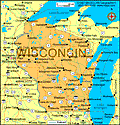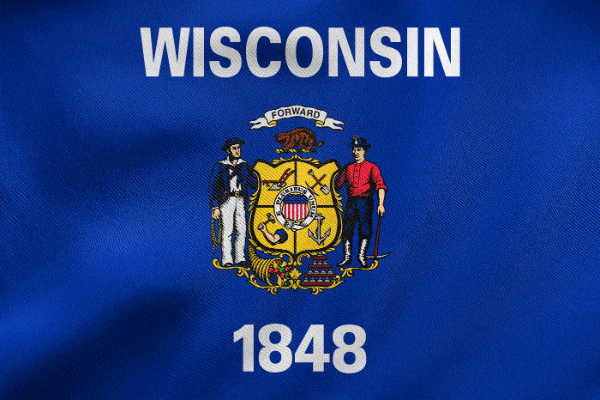 History The Wisconsin region was first explored for France by Jean Nicolet, who landed at Green Bay in 1634. In 1660 a French trading post and Roman Catholic mission were established near present-day Ashland. Great Britain obtained the region in settlement of the French and Indian Wars in 1763; the U.S. acquired it in 1783 after the Revolutionary War. However, Great Britain retained actual control until after the War of 1812. The region was successively governed as part of the territories of Indiana, Illinois, and Michigan between 1800 and 1836, when it became a separate territory. Wisconsin is a leading state in milk and cheese production. Other important farm products are peas, beans, beets, corn, potatoes, oats, hay, and cranberries. The chief industrial products of the state are automobiles, machinery, furniture, paper, beer, and processed foods. Wisconsin ranks second among the 47 paper-producing states. The state's mines produce copper, iron ore, lead, and zinc. Wisconsin is a pioneer in social legislation, providing pensions for the blind (1907), aid to dependent children (1913), and old-age assistance (1925). In labor legislation, the state was the first to enact an unemployment compensation law (1932) and the first in which a workman's compensation law actually took effect. In 1984, Wisconsin became the first state to adopt the Uniform Marital Property Act. The state has over 14,000 lakes, of which Winnebago is the largest. Water sports, ice-boating, and fishing are popular, as are skiing and hunting. The 95 state parks, forests, and recreation areas take up one-seventh of the land. Among the many points of interest are the Apostle Islands National Lakeshore; Ice Age National Scientific Reserve; the Circus World Museum at Baraboo; the Wolf, St. Croix, and Lower St. Croix national scenic riverways; and the Wisconsin Dells.
|
Wisconsin
Read this profile of Wisconsin to learn about the state's history, points of interest, and government. Also find interesting facts about each state, including the state's motto, symbols, and when it entered the union.





